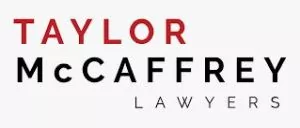Many factors can cause a mortgagor to default on a mortgage: loss of income, marital issues, a failed or struggling business, insolvency, illness, or death, to name a few. Throw in a global pandemic on a scale not seen since the Spanish Flu of 1918 and the unfortunate reality is that we are likely to see a significant increase in the number of defaults in the coming months and years, on both residential and commercial mortgages.
In response to the current pandemic, we have already seen mortgage lenders offer six month payment deferraIs to most mortgagors, almost without question. Even as those deferral options expire, mortgage lenders may be willing to refrain, or "forbear" from enforcing their mortgage security if the mortgagor can make a reasonable proposal for alternate payment arrangements, and be willing to confirm the existence of the indebtedness and validity of the lender's security.
These forbearance agreements, just like the payment deferrals, are intended to be temporary solutions to immediate problems. In the residential sphere, these can be relatively straightforward agreements, sometimes done with just a letter or even an email exchange. Of course, in the commercial sphere, forbearance agreements are often much more complex and detailed agreements [Silk Purse or Sow's Ear? What to Consider When Negotiating a Forbearance Agreement]. Regardless of the form the agreement takes, or whether it is in the residential or commercial sphere, the lender should seek professional guidance before offering or accepting terms of forbearance.
A forbearance agreement might include an attempt to "beef up" the lender's security. In circumstances where the lender does not already have real property mortgage security in place, for example, lenders may require the borrower to provide a multi-purpose mortgage ("MPM", for short) which is intended to secure all indebtedness of the borrower. Like the forbearance agreement itself, the MPM can be a useful tool, but it is not a panacea for either a lender or a debtor. This is true whether the MPM came into existence as part of the forbearance process, or whether it was already in place prior to the initial default.
As with any mortgage, the value of the MPM to the lender is limited to the value of the land against which it is registered. Enforcement of the MPM also comes with unique challenges. While we are fortunate in Manitoba to have a relatively straight-forward mortgage sale and foreclosure process, primarily through our land titles office, [Mortgage Sale and Foreclosure Proceedings in Manitoba] that process was not designed with the MPM in mind. For a conventional residential mortgage, preparing the Notice of Exercising Power of Sale ("NEPS", for short), which signals the commencement of mortgage sale proceedings, is relatively simple. However, as the MPM often secures multiple credit facilities, , each with different characteristics, even preparing the Notice of Exercising Power of Sale ("NEPS") can be a complicated task. And in the commercial sphere, when things go bad for a debtor, there are often multiple subsequent creditors (e.g. lienholders; judgment holders) waiting in line to recover what they can. That means multiple parties to serve with documents, but also potential purchasers of the mortgagee's security position, if it makes financial sense for them. This can also happen in the residential sphere - the mortgage may be the last domino to fall, as debtors fall behind on credit cards or other unsecured debt.
In short, whether in the residential or commercial sphere, both forbearance agreements and multi-purpose mortgages can be useful tools, but also come with their own unique challenges and pitfalls. We help guide mortgage lenders through both forbearance and enforcement solutions.
The content of this article is intended to provide a general guide to the subject matter. Specialist advice should be sought about your specific circumstances.

